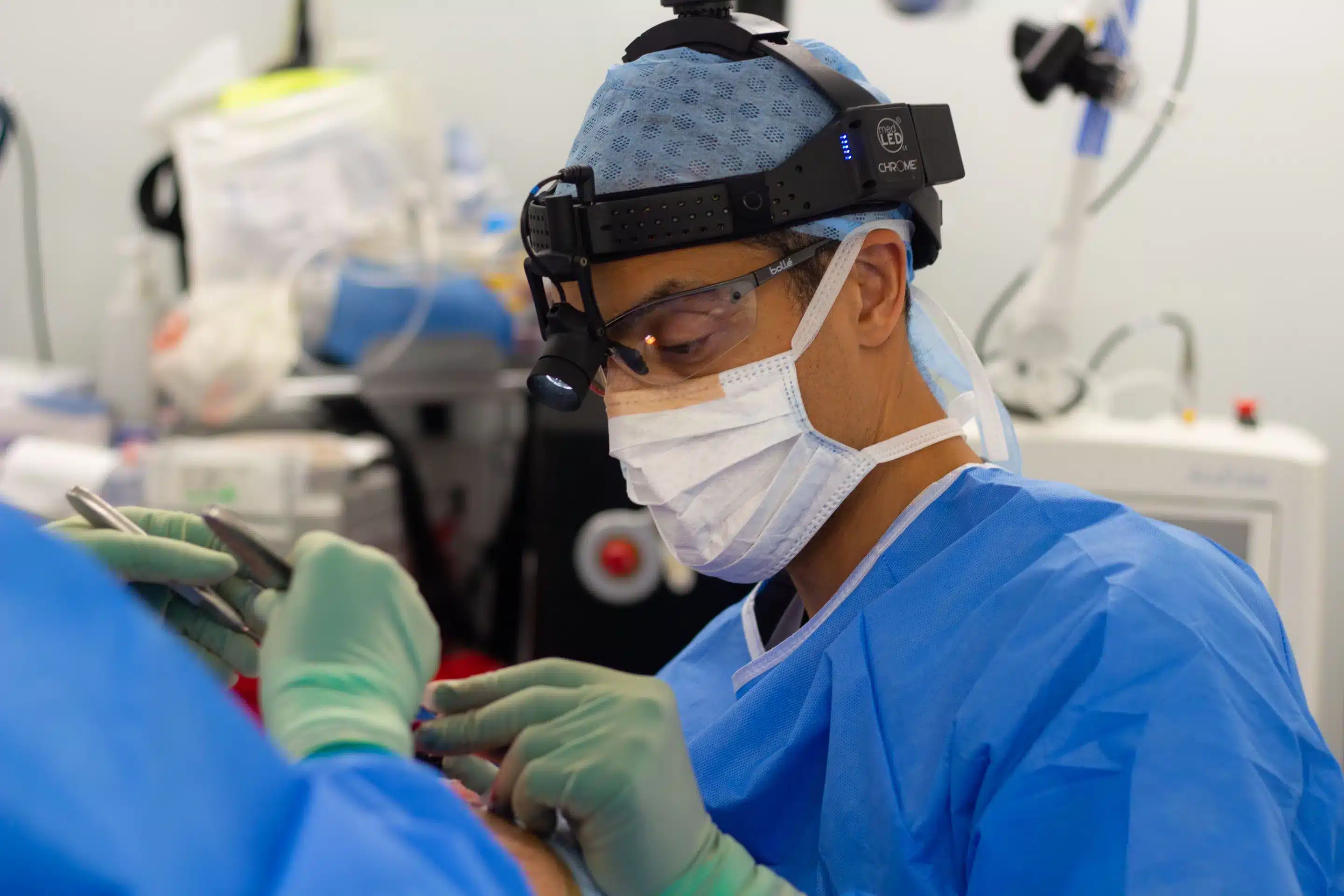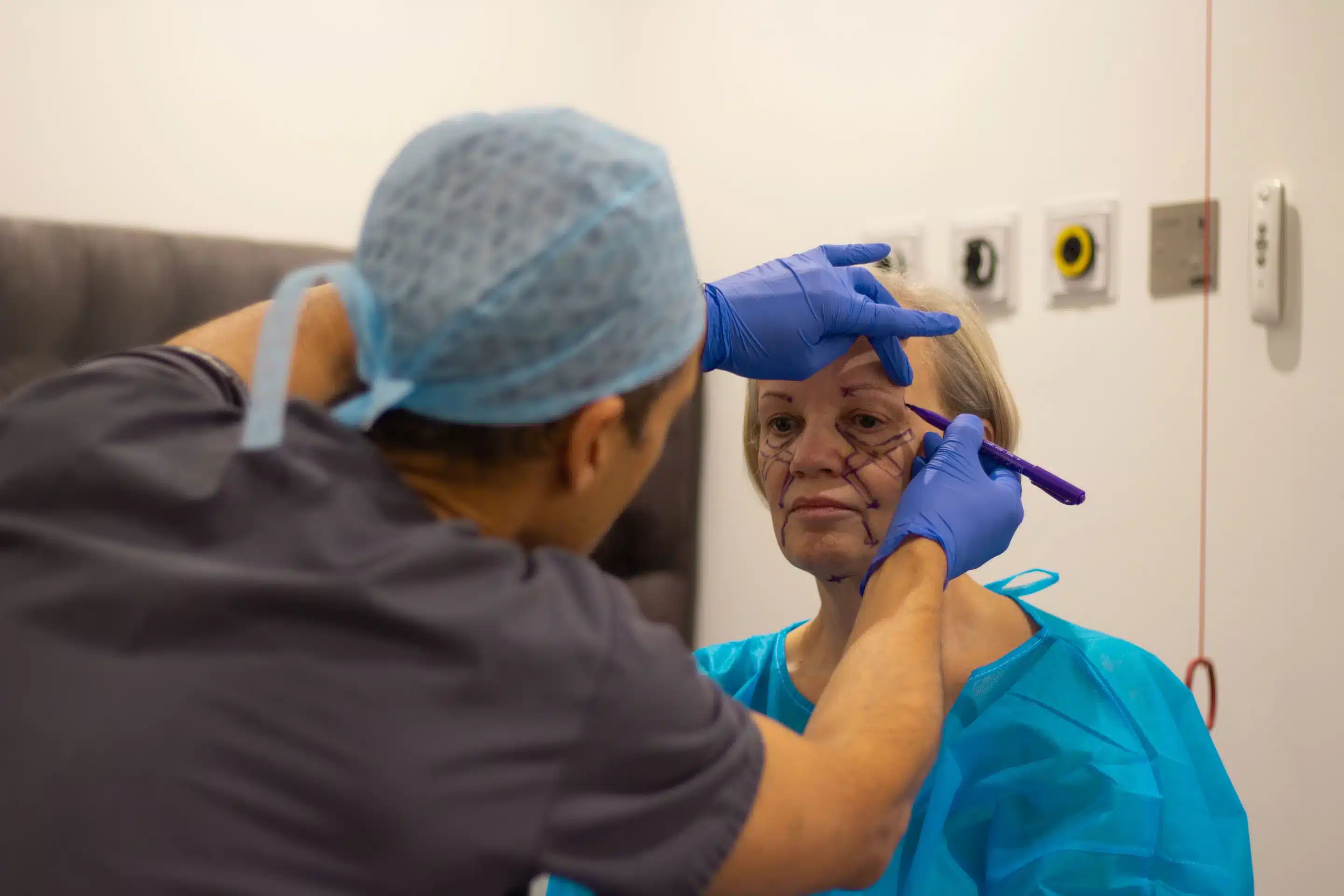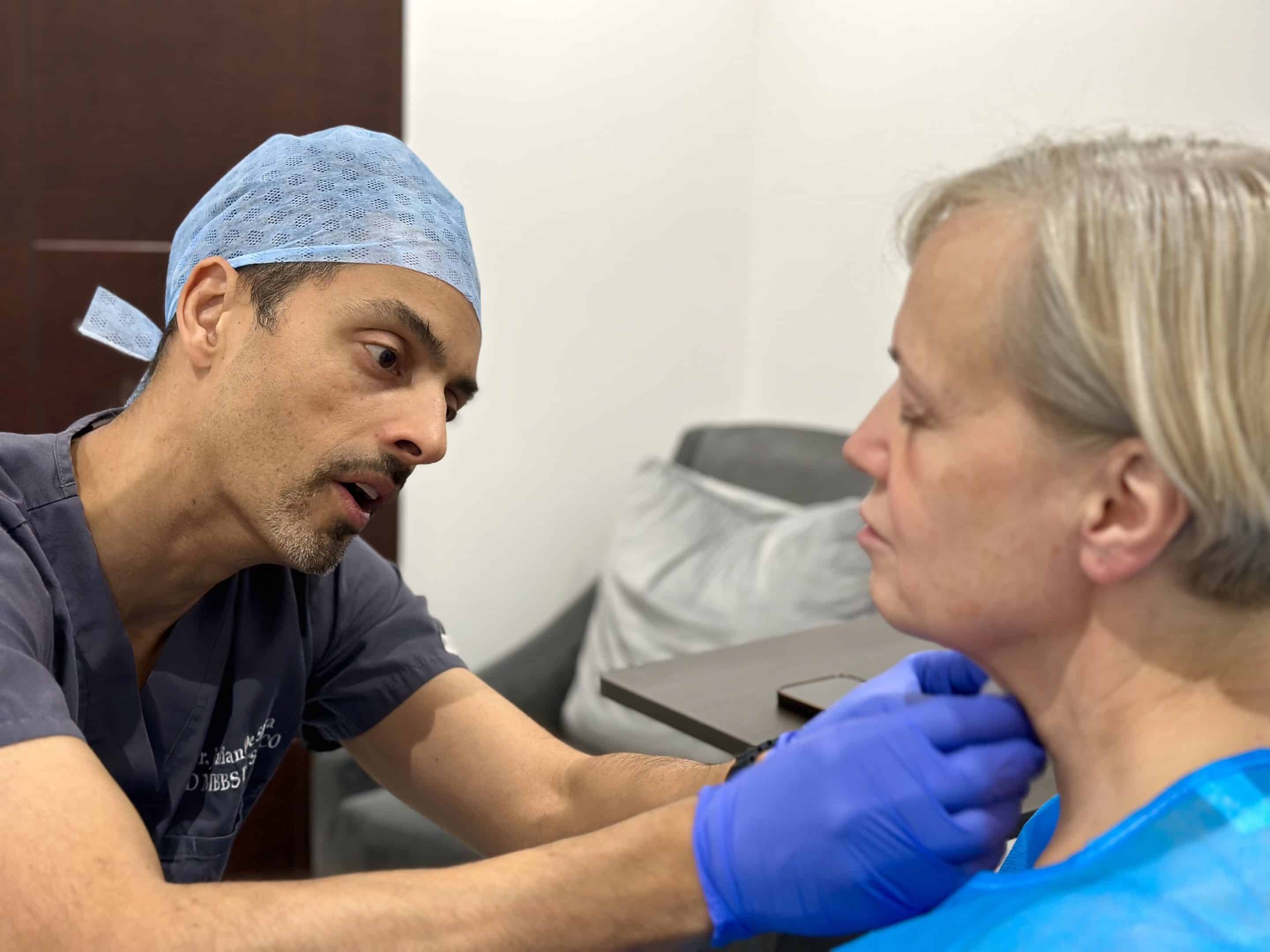Getting a facelift is a huge decision. While the results can be fantastic, one major concern is scarring. No one wants visible scars after a facelift. The goal is to keep them as hidden as possible. Proper wound care plays a huge role in achieving this, helping scars heal smoothly and fade over time.
The Goal: Nearly Invisible Scars
The goal is to make scars nearly invisible. Incisions should be placed in the natural creases around the front ear. They should also not change the hairline or ear shape. For instance, scars behind the ear should be discreet.
However, hiding scars is not easy and must be done by a surgeon who has lots of experience. Some patients go to Dr. Julian De Silva for scar revisions because of visible scars in these areas. More often, the incisions don't follow the ear's natural lines or are too straight.
The best facelift scars are ones you can barely see. A well-placed facelift incision should blend with the ear's natural creases and not affect the hairline or ear shape. However, not all surgeries go perfectly, and some patients end up with visible or poorly placed scars. Understanding the healing process and proper scar care helps prevent this.
Types of Facelift Closures
Different surgeons use different methods to close facelift incisions, each with its pros and cons. Here are the most common types of facelift closures:
1. Non-Dissolvable Stitches
Non-dissolvable stitches are a common choice for facelifts. They cause minimal irritation and provide the best scarring results. These stitches are removed manually within a week or so after surgery.
While they require some extra attention for removal, they tend to heal cleanly, leaving minimal scarring when done right. For many patients, the results are worth the extra step, as the scar is well-hidden in the natural creases around the ear or hairline.
2. Dissolvable Stitches
Dissolvable stitches are fine, clear, or white threads that don't need to be removed. They dissolve on their own within one to six weeks. They're a more convenient option for many patients since there's no need for a follow-up appointment to remove them.
However, they can sometimes irritate the skin as they dissolve. This can lead to increased scarring. This is especially true in other areas of the face and other treatments like neck lifts and blepharoplasty. While they heal well overall, some might get track marks or a slightly wider scar.
3. Clips
Clips are metal tags that look like staples. They're used to secure the skin, especially behind the ears or along the hairline. Surgeons might also use them during brow lifts, where they hold the skin in place. While clips are effective at keeping the skin together, they can be uncomfortable to remove.
In some cases, patients may end up with track marks where the clips were placed, leading to slightly more noticeable scars. Due to the discomfort during removal and the potential for track marks, Dr. Julian De Silva doesn't use clips. He'd rather use stitches because they heal and look better. Though the process may take longer, stitches are generally considered a more reliable option for long-term results.
4. Glue
There are two main types of medical glue used in surgeries. One is similar to super glue, made from acrylic and cyanoacrylate. It's used for minor cuts in emergency settings. It works only on the surface of the skin and doesn't support the deeper tissues, making it unsuitable for more complex surgeries like facelifts.
The other type is called tissue glue. It has been used in cosmetic procedures like eyelid surgery and facelifts. There's another type called tissue glue. More than 10 years ago, Dr. Julian De Silva conducted a randomized controlled study using this glue in eyelid surgery without stitches. It worked well in closing the skin.
Tissue glue helps reduce bleeding and promotes clotting, which can help with the healing process. However, tissue glue is made from human blood products, which means there's a small risk of infection despite being screened. That's why Dr. De Silva prefers not to use tissue glue anymore. However, some doctors still use it when performing facelifts.
Hiding Facelift Scars
You might be concerned about scars if you're considering a facelift. Fortunately, there are a few techniques that keep them hidden and discreet. Let's take a look at two methods in detail below:
Ponytail or Endoscopic Facelift
A ponytail or endoscopic facelift helps hide scars by placing them within your hairline so they're nearly invisible. These methods work well for people with mild skin laxity, which means they don't have much loose skin. They're also perfect for younger patients or those with early signs of ageing. However, these techniques may not be the best choice if there's a lot of loose skin. Traditional facelift surgery is usually more effective for patients with significant skin sagging.
Haemostatic Net
A haemostatic net is a technique where multiple stitches are placed around the face after surgery. This technique reduces the risk of haematoma (blood collecting beneath the skin), which can be as high as 10% in surgeries under general anesthesia. Haematoma can also cause swelling, bruising, and large lumps under the skin.
However, the process involves a lot of stitches, which can look striking and cause visible marks after removal. The stitch marks may also be more noticeable in patients with sensitive skin or a history of poor scarring. Because of this, some surgeons avoid using the haemostatic net, though it can be useful for reducing bleeding and preventing complications.
Best Treatments for Facelift Scars
Once your facelift incisions have healed, there are several ways to improve the appearance of scars.
1. Scar Massage After Facelift
Gently massaging your scars can help improve how they look. Scar tissue can be firm and raised at first, but massaging it helps soften the tissue and boosts blood flow. Over time, this can make the scar flatter and less noticeable. Your surgeon will give you the go-ahead when it's safe to start massaging. It's a simple step that can make a difference.
2. Silicone Sheets and Gels
Silicone-based products, like sheets or gels, are among the best treatments for facelift scars. They help keep the scar hydrated, which is important for the healing process. These products also protect the scar from external irritants, which can make it worse. Many patients notice their scars look less noticeable with regular use of silicone sheets or gels, especially with the texture and color.
3. Laser Treatments
Laser treatments help a lot if your scar has become red or raised. They target the scar tissue to reduce redness and even out the texture. It's a great option for scars that have become a little more noticeable over time. The treatment works by stimulating the skin beneath the scar, so it blends more seamlessly with the rest of the skin.
4. Microneedling
Microneedling creates tiny punctures in the skin to promote collagen production. This helps the scar tissue to blend in better with the surrounding skin. It usually takes several sessions to see noticeable improvement, but it can help scars heal.
5. Steroid Injections
Steroid injections are another common treatment for thick or raised scars. They help flatten the tissue, reduce redness, and make the scar less visible. This treatment works well for more pronounced scars.
Caring for Facelift Scars
Caring for facelift scars makes sure they heal well and look as good as possible. Here are some tips to help you take care of them:
1. Follow Your Surgeon's Instructions
Your surgeon knows what's best for your unique healing process. Follow their advice on how to clean, dress, and protect your facelift incisions. Everyone heals differently, so follow their instructions.
2. Keep the Area Clean
Gently wash the area with mild soap and water to keep it clean. Doing this will help prevent any infections from forming, which could make your scar worse. Just be sure not to scrub too hard.
3. Avoid Sun Exposure
Sun exposure can darken scars, making them more noticeable. Always apply sunscreen to your face or wear a hat when you're outside. The less sun, the better it is for your scars.
4. Don't Pick at Scabs
Don't pick at any scabs, as tempting as it may be. Let your skin heal naturally. Picking at scabs can infect your skin and worsen scarring.
5. Stay Hydrated and Eat Well
Your body needs good nutrition to heal properly. Drink plenty of water and eat food rich in vitamins A and C, which helps with skin repair. Remember, healthy food equals healthy skin.
6. Avoid Smoking and Drinking Alcohol
Smoking and drinking alcohol can slow down the healing process and increase the risk of developing poor scars. Avoid both while your scars are healing.
7. Be Patient
Healing takes time. Your scars may look red or raised at first, but they'll fade over a few months. Be patient and give your skin time to heal fully.
Conclusion
Scars after a facelift are inevitable, but they don't have to be obvious. With the right surgical techniques, proper wound care, and post-op treatments, your scars can heal and stay hidden. Following your surgeon's recommendations and being patient with the healing process give you the best chance of having nearly invisible scars.
Are you thinking about having a facelift in London? Dr. De Silva's clinic in Central London, Harley Street, W1, is one of the best. Book a facelift consultation here to discuss your options and get a personalised treatment plan.





